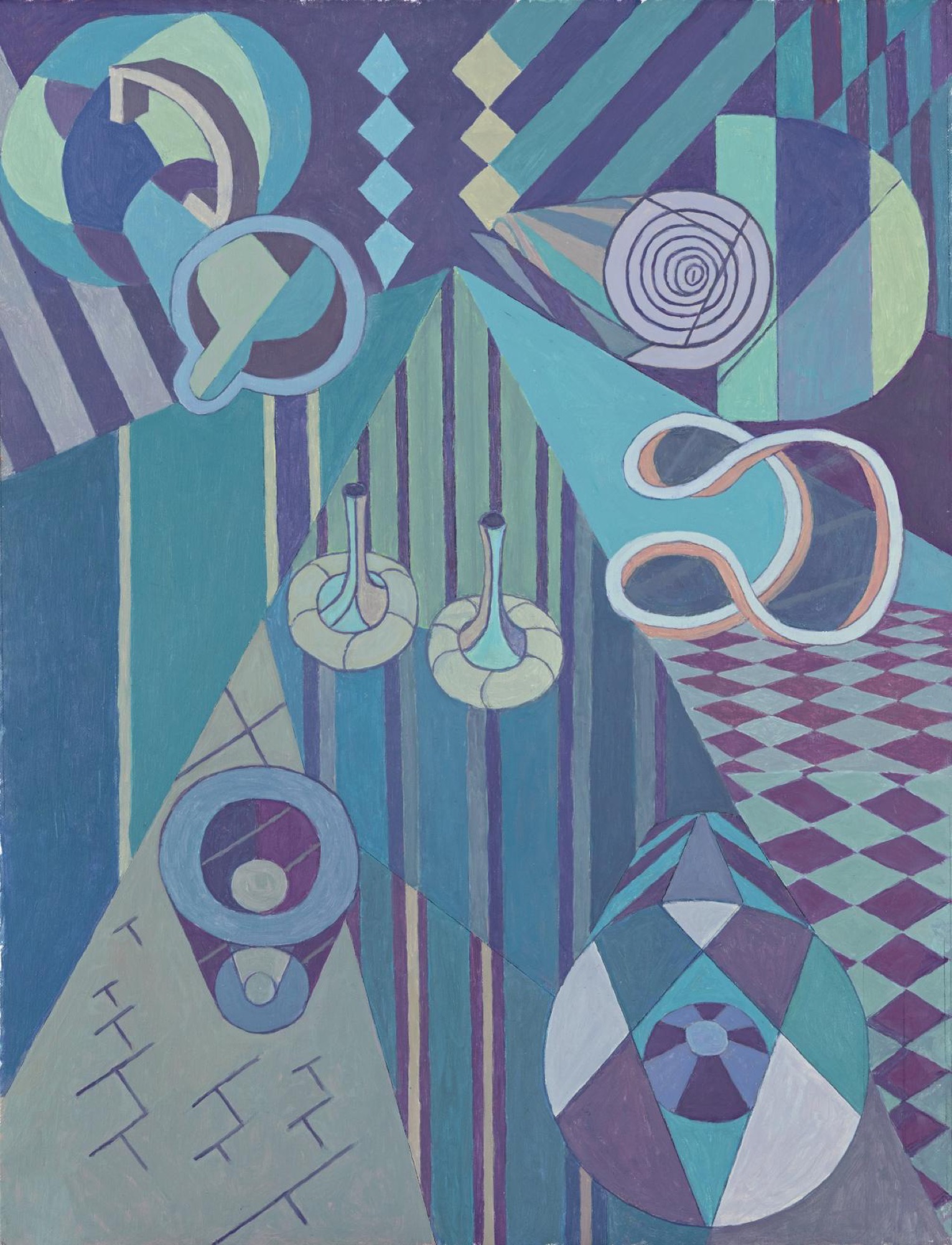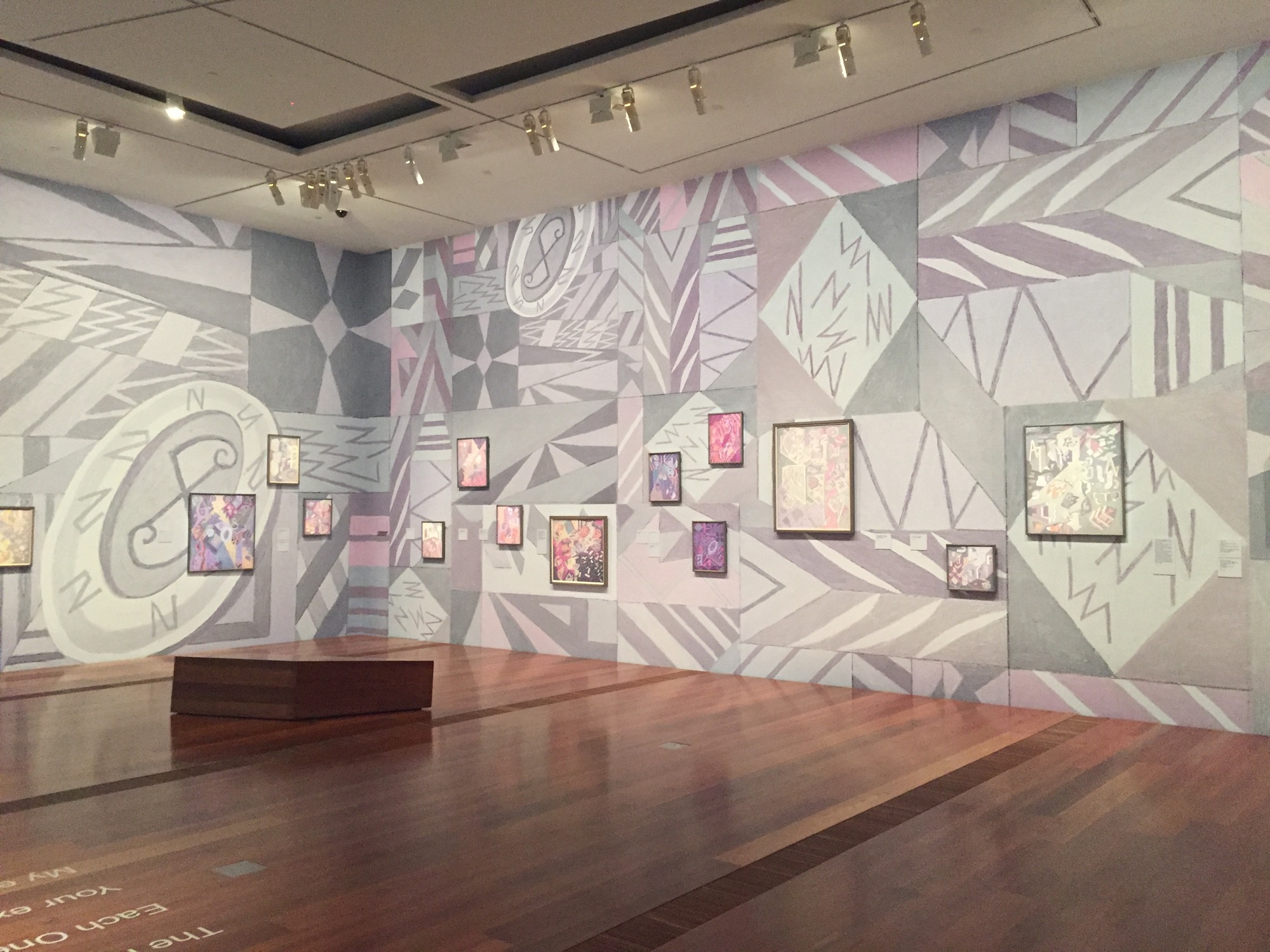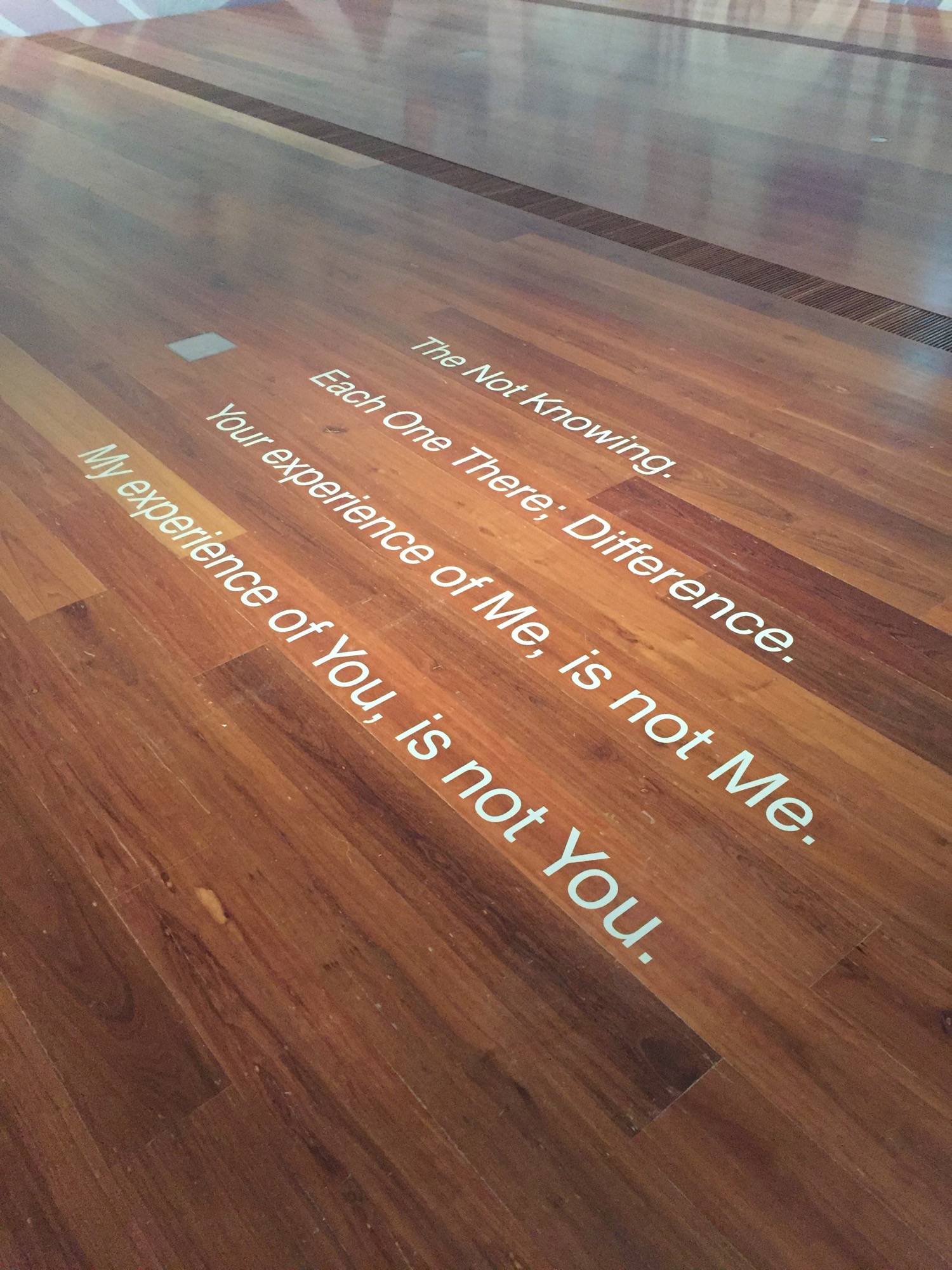Our Knowing and Not Knowing: Helen Maudsley
Paris Lettau
Curated by National Gallery of Victoria contemporary art curator Pip Wallis, Our Knowing and Not Knowing: Helen Maudsley is one of four summer solo shows on the third floor of the NGV Australia, including Louise Paramour, Mel O'Callaghan and Del Kathryn Barton
Born in 1927, and coming of age when Australian painters were increasingly engaged with European avant-garde and modernist art, Maudsley has had a practice spanning seven decades. Yet her art defies easy categorisation in terms of the artistic scenes from which she emerged. It displays none of the overt influence that Melbourne's psychoanalytic figures Clara Geroe and Reg Ellery had on Maudsley's peers, as seen in the affected and moody pictures of Albert Tucker. Nor are there the urban and social obsessions of her late husband John Brack, or the nationalism of such Antipodeans as Sidney Nolan.
There are, however, echoes of European modernism throughout her work. There's the presence of Giorgio de Chirico's metaphysical painting in her use of oft-repeated decontextualised motifs and figures throughout her painting (vases, hands, glasses, shoes, columns, letters). This is seen, for example, in the urban-like architectural–scapes of The Not Knowing. Each one there; difference. Your experience of Me, is not Me. My experience of You, is not You (2014). There are also Surrealist references and uses of futurist hues and 'lines of force' such as in Other than. Not to be Got. Heads that are Different, Contained (2013). Also prominent in Maudsley's practice is the Cubist and post-Cubist space that forms the basic building blocks of almost all the works on display. These works also display a strong sense of composition that clearly has its origin in drawing (which the exhibition provides three examples of).

Despite these clear associations with some of the most widespread artistic movements of the 20th century, Maudsley's practice has still often been seen as somehow inaccessible, and thus widely marginalised, as if there was never enough language—or rather, enough of the right language—to properly engage her work. It's a sorry irony that the number of words Maudsley has used in the titles of her works probably exceeds the number of words that have been written on her practice.
Maudsley considers these titles to be a 'lead in for the viewer', 'written thoughts' to access what she calls 'visual essays' or 'visual analogies'. The titles end up having the feel of those ever baffling (for those who don't know their logic) clues to cryptic crosswords. Here's the longest one I found (coming in at 101 words):
'You Know Something that I don't, and I Want it; I'm the same as You'
'No you're Not. I haven't Got what you
think I've Got.'
'Yes You Have and you wont let me
Have it, but if I Match you, I'll Get it.'
'When you find out I Haven't Got
what you think I've Got. I will be your
Enemy.'
'If I don't Get it and Everyone else
Does, I'll look Stupid, so I Pretend to
Get it, but I'll Hate you. When No one
Gets it, I'll join the Pack and Kill you. If
you withstand this, You're Mad'
It is the titles , actually, that are at once the most difficult and, through their play with the visual imagery, also most rewarding elements of Maudsley's work. Difficult because, despite Maudsley repeating that her intention is to have us look at and not look for something in the work, the titles constantly get in the way of our ability to simply look. They invest and 'fill up' sight with language so that the eye becomes a searching-eye, searching for something that the works never end up betraying. One option to overcome this would of course be to just ignore the titles. This option, however, never feels viable, especially when confronted with thirty-two works in a single room (with their oft repeated motifs and formal similitudes): the titles are one of the few reprieves from what, at worst, could be a visual monotony.

However, if the titles are difficult because they get in the way of simply looking, their rewarding aspect is that they actually compel one to be conscious of, and ultimately adjust one's very attitude to, looking. If the titles are not accepted at face-value as clues to a visual analogy that needs to be unlocked like the discrete, unified answer to a cryptic crossword; if, after filling sight up with Maudsley's language one actually empties sight of this language, then the titles start to function as a kind of semiotic or symbolic atmosphere that shrouds the work, keying in sight to a semiotic register. Instead of a visual search, they produce a visual 'mood'.
This 'overcoming' of the titles, however, was only one challenge of Our Knowing and Not Knowing: Helen Maudsley. Another challenge was the appropriation of Maudsley's artistic strategies in the NGV's exhibition design, in which, through a series of mimetic acts, the same formal structure of Maudsley's work is repeated at the level of the exhibiton's layout. What are these 'mimetic acts'?
One is the NGV utilising a painting of Maudsley's as a design for an all-encompassing wallpaper (one quickly recognises the design to be taken form The Self: Part of it But not Merging (2017)). (According to rumour, there is a wallpaper mandate at the NGV because “a million dollars” was blown on a wallpaper machine). In doing this, the spatial poetics of Maudsley's work is literalised within the exhibition space. This all-over nature of the wallpaper has the effect of consuming Maudsley's individual works, much like Sam Songailo's wall painting notoriously did in Painting. More Painting at ACCA in 2016.

In a second mimetic act by the NGV, paintings are arranged on the walls in a staggered, salon-like hang, reflecting the spatial layout of forms throughout Maudsley's works. Instead of vases, hands, glasses, shoes, columns and letters, however, works themselves cover the NGVA's walls in a composed disarray.
A third mimetic act of the NGV was this: laying in the centre of the floor, in large sans-serif font, the title of one of Maudsley's works as a lead in to the exhibition: The Not Knowing. Each one there; difference. Your experience of Me, is not Me. My experience of You, is not You. This had the effect of providing, like Maudsley’s titles do for individual works, a linguistic ‘way in’ to the exhibition as a whole.

If this threefold mimetic act (covering of walls, formal arrangement of works, integration of language) allows the viewer to be immersed in the same dialectical structure and dynamics of Maudsley's work but at the level of exhibition design, it also forecloses other 'ways in' to the artist's practice.
Given that Our Knowing and Not Knowing: Helen Maudsley is presented on the third floor of the NGVA alongside exhibitions by three female artists, it is difficult to ignore speculation that the NGV is attempting to address widespread criticisms of a lack of representation of female artists in its exhibition program. It is therefore surprising that there is no art historical account of Maudsley's practice and the long-term directions of her work (thus redressing the dearth of writing on her practice). Nor is there an attempt to come to terms with Maudsley's potential influence or formal dialogue with contemporary Australian artists; or to understand why, for instance, she has not received the same institutional, commercial and art historical attention of her slightly younger peer on the ground floor, Gareth Sansom. Left unanswered, these questions ultimately highlight our not knowing Helen Maudsley.
Paris Lettau is a writer from Melbourne.
Title image: Helen Maudsley, The Self: Part of it But Not Merging, 2017, oil on canvas, 52.5 x 40.0 cm © Helen Maudsley)


